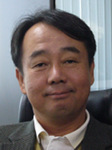
Segmentation and Representation for the Reuse of Skills Learned by Imitation
Il Hong Suh, Hanyang University
Abstract:
 A robot manipulation task can be usually achieved by performing a series of meaningful actions (so-called basis skills). In this talk, there will be discussed our paradigm to autonomously segment, classify, and model basis skills embedded in such a manipulation task from a single demonstration. For segmentation, joint motion trajectories of a robot from such a single demonstration will be modeled by a GMM (Gaussian Mixture Model), since segmentation points between basis skills are to be extracted by segmenting mixture components of the GMM. The rationale is that a GMM expresses entire population of the data as some sub-populations using mixture components. It would be better for us to obtain meaningful basis skills as many as possible from a manipulation task. . It is therefore important to determine the number of mixture components as many as possible when the GMM is modeled based on BIC (Bayesian Information Criterion) following MDL (Minimum Description Length) principle.
A robot manipulation task can be usually achieved by performing a series of meaningful actions (so-called basis skills). In this talk, there will be discussed our paradigm to autonomously segment, classify, and model basis skills embedded in such a manipulation task from a single demonstration. For segmentation, joint motion trajectories of a robot from such a single demonstration will be modeled by a GMM (Gaussian Mixture Model), since segmentation points between basis skills are to be extracted by segmenting mixture components of the GMM. The rationale is that a GMM expresses entire population of the data as some sub-populations using mixture components. It would be better for us to obtain meaningful basis skills as many as possible from a manipulation task. . It is therefore important to determine the number of mixture components as many as possible when the GMM is modeled based on BIC (Bayesian Information Criterion) following MDL (Minimum Description Length) principle. For this, original motion trajectories need to be transformed toward the space for as much of the variability in the trajectories as possible. Therefore, the trajectories will be first transformed to a low-dimensional space by PCA (Principal Component Analysis).After finding mixture components of GMM in the reduced dimensional space by PCA , temporally overlapping regions between mixture components will be next extracted as candidate regions of segmentation. Specifically, the candidate regions are constructed using geometrical lengths calculated by eigen-decomposition from covariances of mixture components. The trajectories are finally segmented at points where the geometrical lengths of covariance trajectory obtained by GMR (Gaussian Mixture Regression) are locally minimized into the candidate regions. These local minima mean that overlapping regions between mixture components are locally smallest.
Once basis skills are obtained from a single demonstration, they need to be incrementally improved. To this end, novel motion trajectories will be additionally demonstrated , and some of their basis skills has to be classified as different from old one. For this, temporal information should be also eliminated from models of the skills, since the length of novel trajectories will be usually different (long or short) from old one and will be varying due to unequal demonstrations. For our incremental learning, a set of basis skills is modeled as its corresponding set of HMMs (Hidden Markov Models). The classifiers consist of this set of basis skills and a threshold model. Here, the threshold model is an ergodic HMM which is constructed by including states of all basis skills to classify novel trajectories into novel categories. A basis skill is incrementally modified and represented as a multi-path HMM by adding new HMMs to the multi-path HMM.
To validate our proposed methods, we will show some video clips in which there will be considered autonomous segmentation of basis skills for two cooking tasks. In addition, we will show that our autonomous segmentation produces almost similar basis skills which have been hand-crafted by a human expert, where there are employed motion data publicly available at lab of Michael Beetz, TUM, Germany.